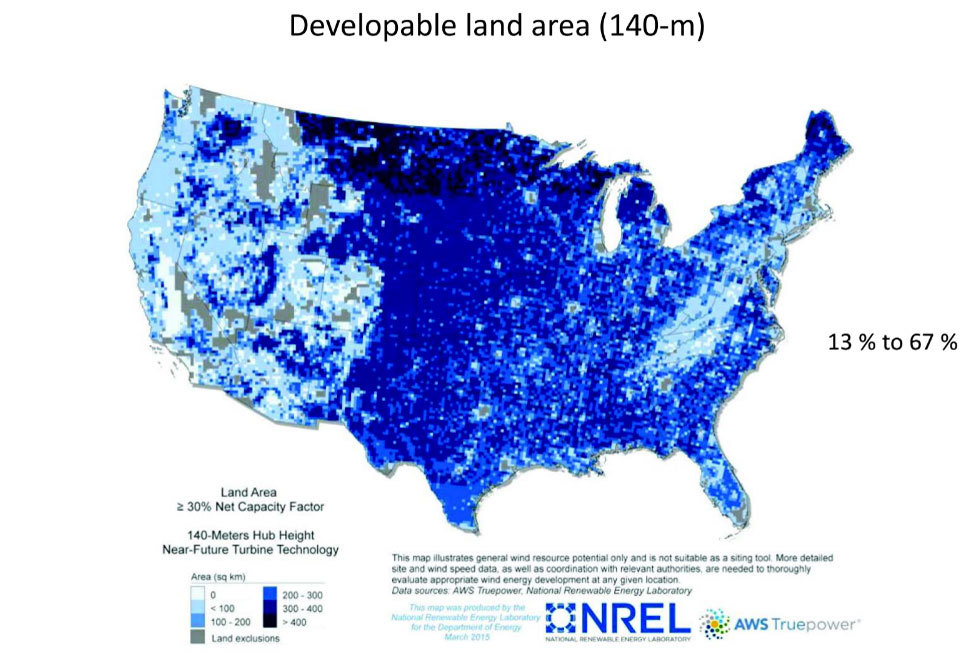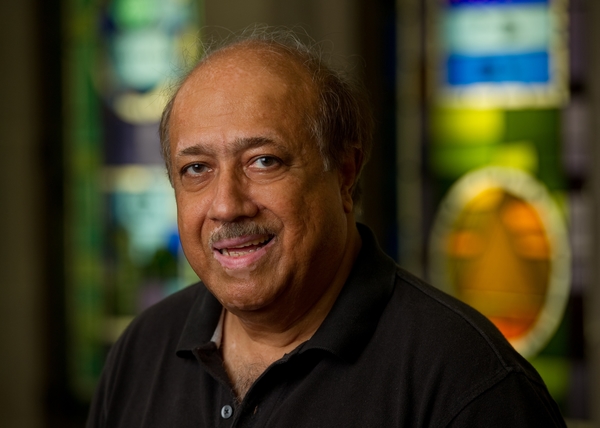Innovative Wind Turbine Tower Design could Reduce Costs and change Energy Landscape

Global Wind Day, June 15, is described as a day for discovering wind, its powers, and the possibilities it has to change the world. According to the U.S. Department of Energy, it is estimated that raising wind turbine tower heights from a standard 80 meters to 110 meters would increase the amount of land area that could be developed for wind turbines by 54 percent, and raise it by an additional 13 to 67 percent when the tower height reaches 140 meters. Additionally, these taller towers are able to capture greater wind speeds, thereby increasing energy output. However, a major challenge for developing taller turbine towers lies in the problem of retaining the dynamic stability that is found in shorter, standard towers, while also controlling transportation and construction costs of large tower components.
Through a seed grant funded by ND Energy, the Center for Sustainable Energy at Notre Dame, researchers are working together to design a non-traditional structure for wind turbines that will both increase efficiencies and decrease energy costs. Yanlin Guo, ND Energy Postdoctoral Fellow, has designed an ultra-tall wind turbine tower up to 140 meters that, when computationally tested, proved to have an optimized shape that reduces wind impact on the tower and enhances the dynamic stability of the structure.
“The taller the wind turbine tower, the stronger and more consistent the wind being captured is due to reduced ground friction,” said Guo. “Additionally, a taller tower allows the necessary ground clearance for installing larger rotors, which can produce more energy, leading to a reduction in energy costs overall.”

To create an efficient structural system, Notre Dame researchers turned to pre-stressed concrete, or concrete that has had initial compression introduced by steel cables to overcome tension weaknesses of concrete. Using a post-tensioning technique, the steel cables can be bent to match an intended shape, like an optimized turbine tower, and stretched like rubber bands to keep the tower components together.
Ahsan Kareem, Robert M. Moran Professor of Civil and Environmental Engineering and Earth Sciences (CEEES), is a project co-advisor and a major contributor to this wind turbine tower concept. When discussing the tower structure Kareem said, “You can think about the tower structure like a piece of bread: when you pick up bread, it tends to sag. But if you pick it up with one finger on each end and push it together, it creates resistance to tension so it is held together. By using pre-stressed concrete, we create a similar tension resistance so as the wind blows against the tower, it will more easily maintain its shape.”
Pre-stressed concrete is typically used when building bridges or buildings to strengthen the infrastructure. However, the researchers are looking at this material as a cost-effective medium that can be used to design and construct ultra-tall wind turbine tower structures. An additional cost benefit of the wind turbine tower concept being developed is its limited number of connections, or places where the structure must be put together during on-site construction.

“This research is based on the combination of a pre-stressed concrete structural concept as well as an optimized tower shape in order to increase resistance while also reducing wind loads on the turbine tower,” said Yahya Kurama, professor and associate chair of CEEES and project co-advisor. “Each of these objectives are important to consider when attempting to design an efficient wind turbine tower that is intended to be nearly twice as tall as the industry standard.”
ND Energy is a Notre Dame Research center whose mission is to foster and grow energy-related research toward sustainable and affordable energy solutions, to support energy-related education and outreach, and to influence the national and global discussions of the most pressing energy policy issues and questions of the time. To learn more about the ND Energy Postdoctoral Fellowship Program and other sustainable energy projects at the University of Notre Dame, please visit energy.nd.edu.
Contact
Barbara Villarosa / Business and Communications Program Director
ND Energy / University of Notre Dame
bvillaro@nd.edu / 574.631.4776
energy.nd.edu / @NotreDameEnergy
About Notre Dame Research
The University of Notre Dame is a private research and teaching university inspired by its Catholic mission. Located in South Bend, Indiana, its researchers are advancing human understanding through research, scholarship, education, and creative endeavor in order to be a repository for knowledge and a powerful means for doing good in the world. For more information, please see research.nd.edu or @UNDResearch.
Originally published by Brandi Klingerman at research.nd.edu on June 15, 2016.